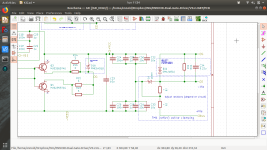Hi all,
Concerning active clamping against Overvoltage at Vce when fast Turn off of IGBT gate, I found those interesting docs which shows two different approach that seems to be superior to the active clamping listed above:
Advanced active clamping :
http://www.power-mag.com/pdf/feature_pdf/1260811353_CT-Concept_PEE_0809.pdf
Dynamic active clamping:
https://www.infineon.com/dgdl/Infineon-PCIM_2008_Robustness_improvement-ED-v1.0-en.pdf?fileId=db3a30431a5c32f2011a5dee3e7900b2
What do you think is the best approach between them?
Concerning active clamping against Overvoltage at Vce when fast Turn off of IGBT gate, I found those interesting docs which shows two different approach that seems to be superior to the active clamping listed above:
Advanced active clamping :
http://www.power-mag.com/pdf/feature_pdf/1260811353_CT-Concept_PEE_0809.pdf
Dynamic active clamping:
https://www.infineon.com/dgdl/Infineon-PCIM_2008_Robustness_improvement-ED-v1.0-en.pdf?fileId=db3a30431a5c32f2011a5dee3e7900b2
What do you think is the best approach between them?


